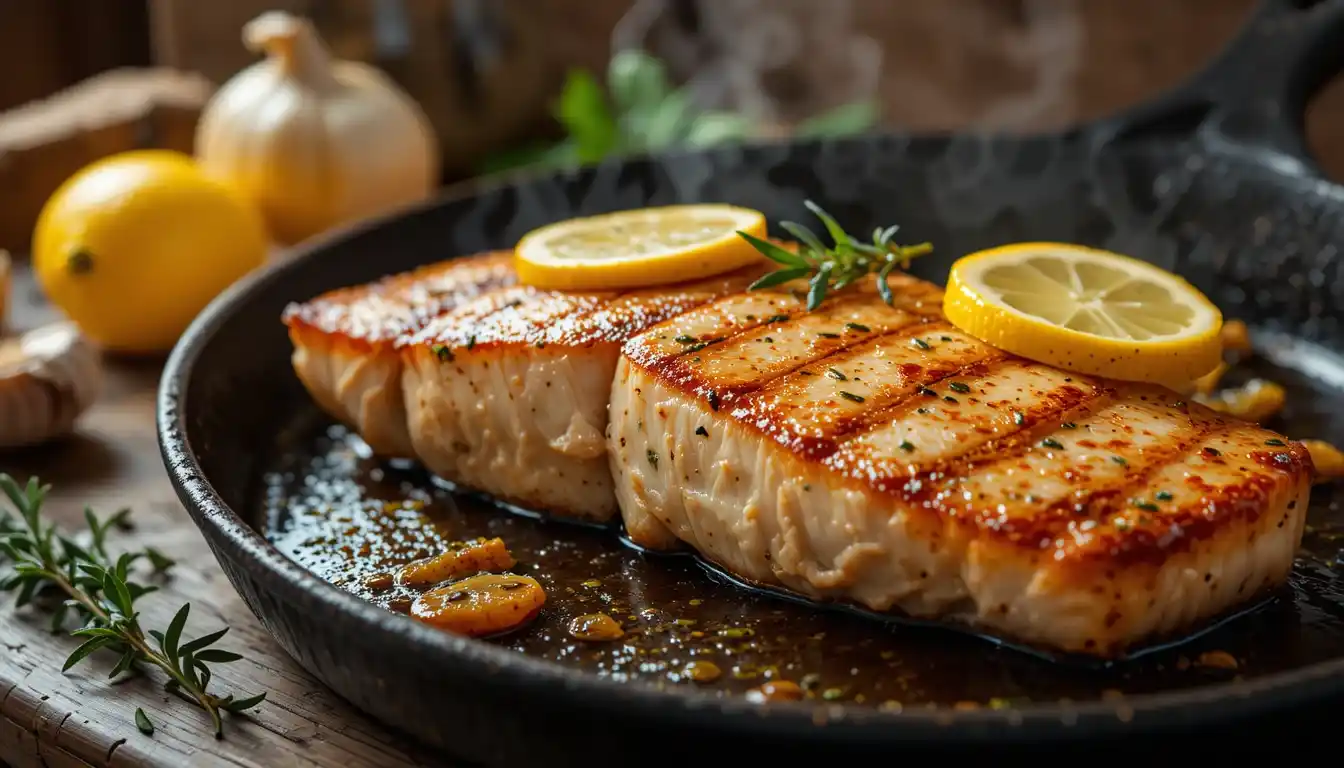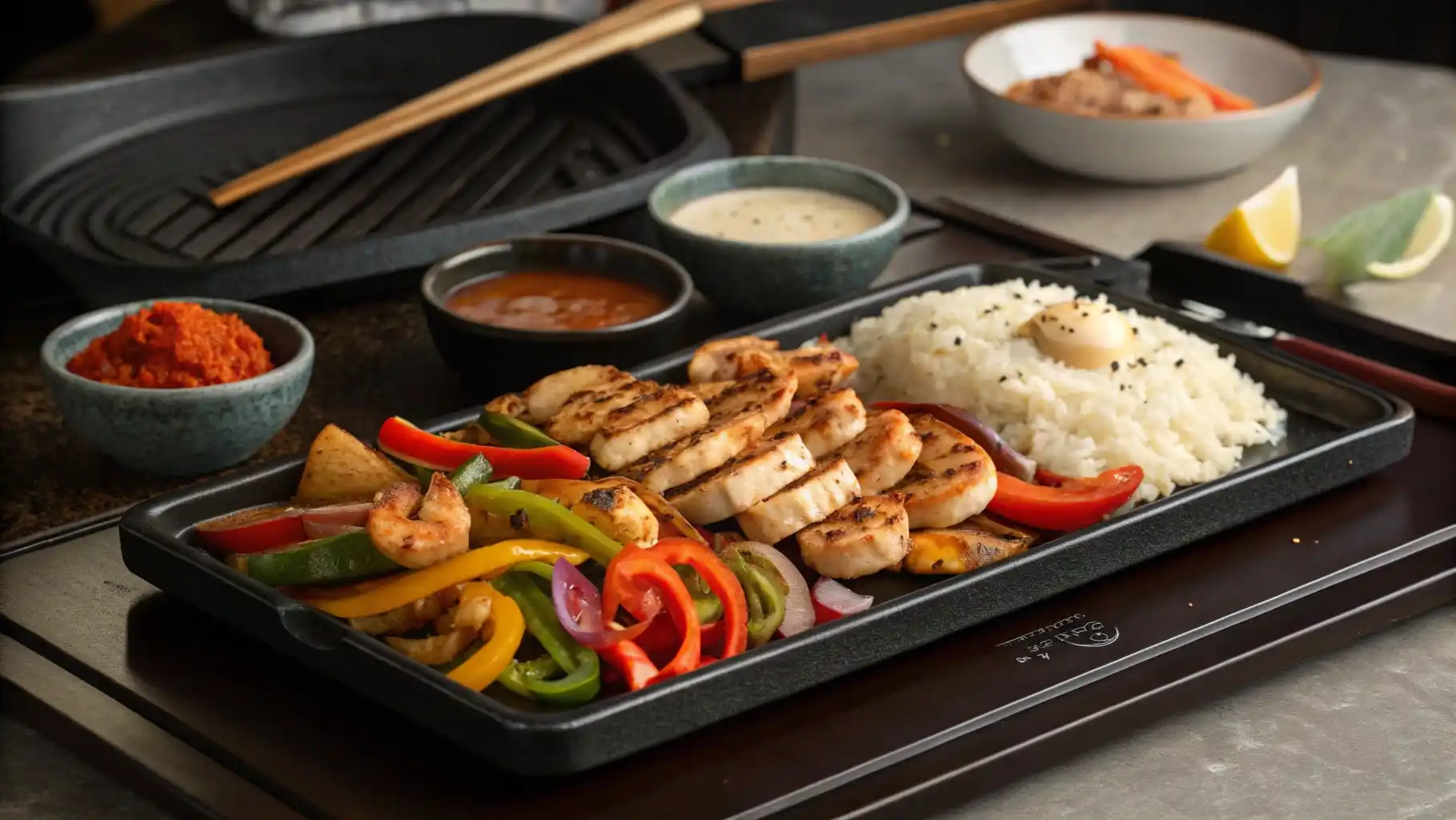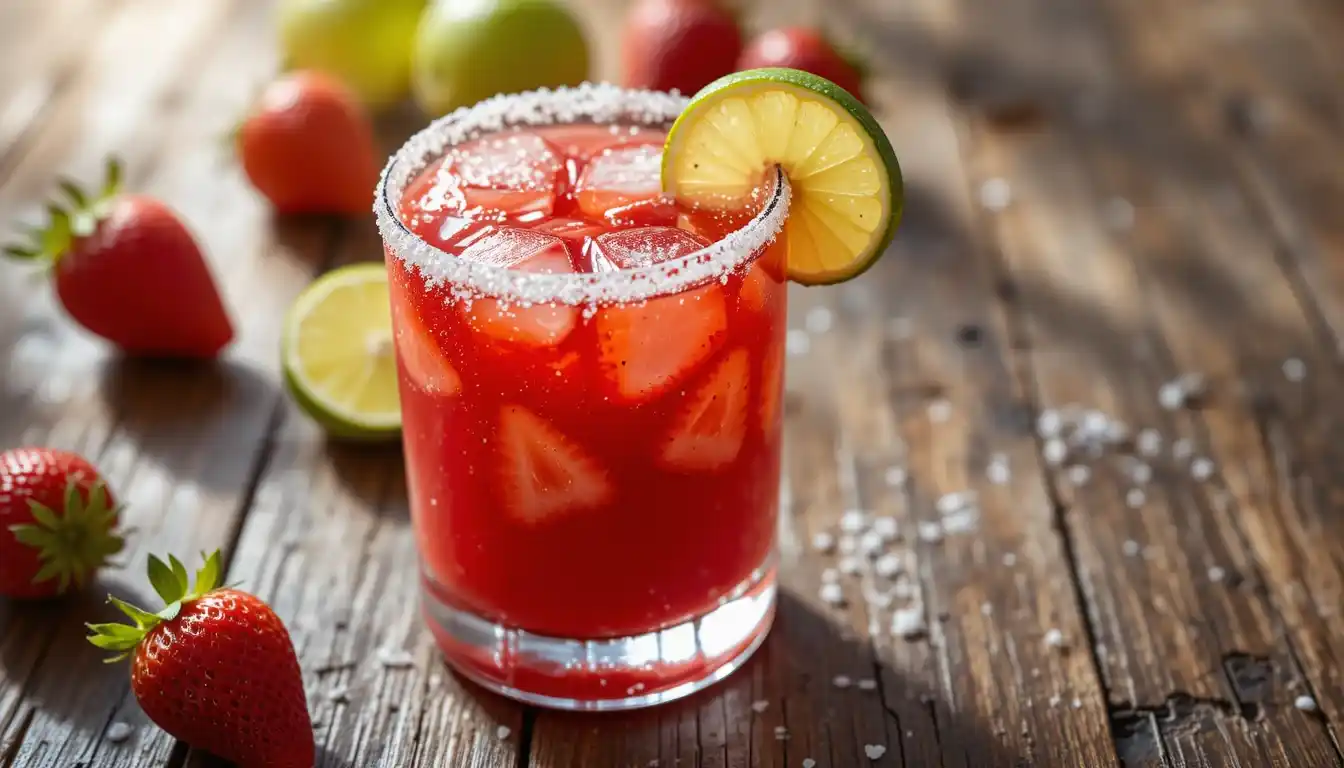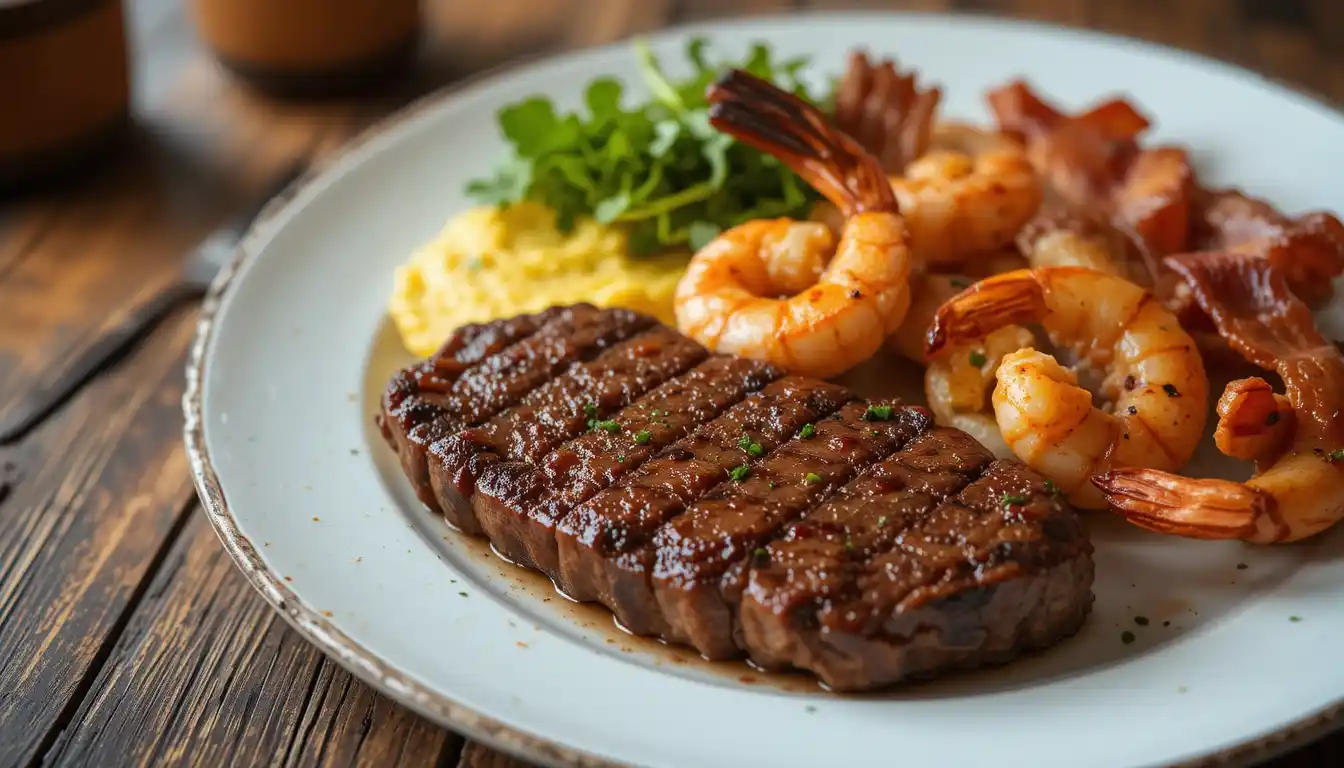Did you know that a perfect swordfish recipe requires just 5-6 minutes in a hot oven after browning to achieve restaurant-quality results?
Many home cooks shy away from preparing swordfish, fearing they’ll end up with dry, tough fish. However, this firm, steaky white fish is actually quite versatile and forgiving when you understand the basics. Whether you’re interested in a grilled swordfish recipe that takes only 6 minutes per side, a quick pan seared swordfish recipe needing just 3.5 minutes per side, or a simple baked swordfish recipe, timing is everything. In fact, the best swordfish recipe approaches cooking this magnificent fish like a fine steak, aiming for a slightly rare center to maintain its tender texture.
Additionally, swordfish isn’t just delicious—it’s nutritious too. A typical 8-ounce serving delivers an impressive 45g of protein with approximately 390 calories, making it perfect for health-conscious diners. It’s also naturally low-carb and keto-friendly, which certainly adds to its appeal.
In this guide, we’ll walk you through creating foolproof swordfish steak recipes that rival your favorite seafood restaurant. From selecting the perfect cut to achieving that ideal 145°F internal temperature, we’ve got you covered.
How to Choose the Best Swordfish for Your Recipe
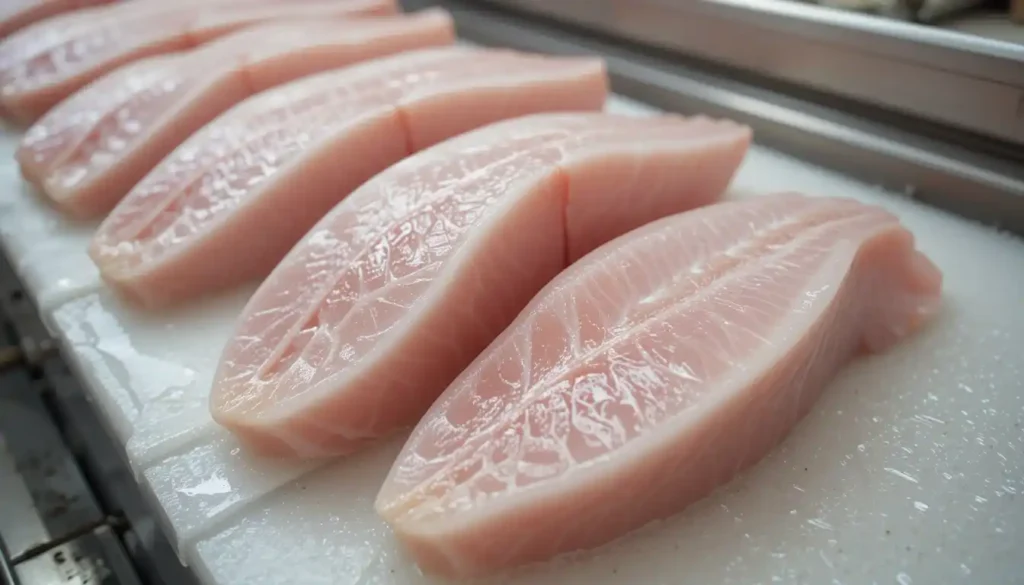
The success of your swordfish recipe begins long before you turn on the heat. Selecting the right cut makes all the difference between restaurant-quality results and disappointment.
Thickness matters tremendously when shopping for swordfish steaks. Always select pieces that are at least 1 inch thick, as thinner cuts tend to bend and potentially break when flipped during cooking. For the most consistent results, look for steaks between 1 to 1.5 inches thick—this optimal thickness ensures even cooking while retaining precious moisture.
When examining color, choose steaks that are pale cream with subtle pink tinges. While a reddish streak or two is perfectly acceptable, avoid any pieces showing brown discoloration. The flesh should appear moist (a whitish film indicates dehydration) and firm to the touch but not hard. Quality swordfish displays a tight, swirling pattern throughout the steak.
For portion planning, prepare 6-8 ounces per person. If you find larger steaks, simply cut them in half to create individual portions. Most swordfish steaks come boneless, though occasionally they’ll have skin that should be removed before cooking.
Proper preparation begins with patting the steaks completely dry with paper towels. This crucial step ensures a proper sear when cooking. Next, trim away any skin, which tends to be tough and unpleasant.
For enhanced flavor and moisture retention, consider dry brining: sprinkle kosher salt (about 1/2 teaspoon per pound) over the steaks and refrigerate for anywhere from one hour to a full day. The longer salt has to penetrate the flesh, the juicier your finished dish.
Before cooking your swordfish steak recipe, lightly coat both sides with a neutral, high-smoke-point oil such as canola, avocado, or grapeseed. Avoid extra virgin olive oil for this initial coating, as its low smoke point can create unpleasant flavors when exposed to high heat.
Finally, season both sides generously with your preferred spices before moving on to your chosen cooking method—whether it’s a grilled swordfish recipe, pan-seared approach, or baked preparation.
Best Cooking Methods for a Foolproof Swordfish Recipe
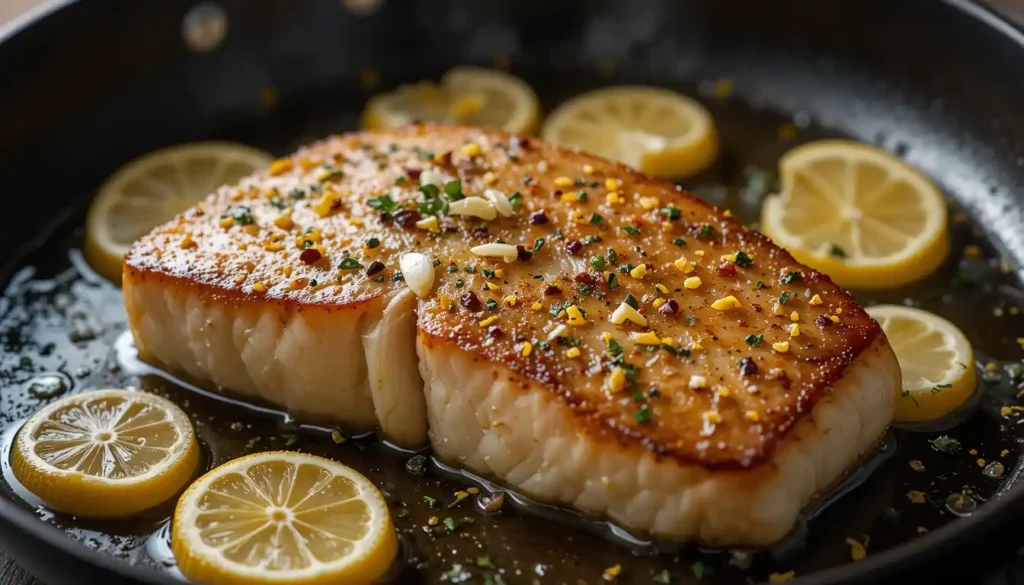
The versatility of swordfish makes it ideal for multiple cooking techniques, each producing restaurant-quality results when executed properly. Unlike more delicate fish varieties that fall apart easily, swordfish maintains its structure under high heat, making it perfect for grilling, pan-searing, or baking.
For pan-searing swordfish, heat your skillet to medium-high until it’s properly hot. Brush the fish with neutral oil, then place it in the pan to develop a golden crust. A 1-inch thick steak requires approximately 5-7 minutes per side. To create a flavorful finish, add butter during the final minutes of cooking, followed by white wine, lemon juice, and aromatics like garlic or herbs. The butter will immediately sizzle, subsequently reducing into a rich sauce.
When grilling swordfish, this fish truly excels as it stands up remarkably well to direct heat without sticking to the grate or falling apart. Preheat your grill to medium-high (about 400°F), ensuring the grates are well-oiled to prevent sticking. Grill for 4-5 minutes on the first side until you achieve those coveted grill marks, then flip once and cook for an additional 3-4 minutes. Primarily, treat swordfish as you would a rare steak—sear it well on one side then finish on the other.
For baking swordfish, preheat your oven to 450°F. A 1-inch thick steak requires just 7-10 minutes total, with no flipping needed. To avoid dryness, many chefs prefer baking at 400°F, which cooks the fish more quickly and preserves moisture.
Regardless of your chosen method, the key to perfectly cooked swordfish is attentiveness to doneness cues. The fish should turn opaque up the sides as it cooks. Moreover, when it feels firm to the touch and flakes easily with a fork, it’s ready. For precision, use a thermometer to reach an internal temperature of 145°F.
Above all, remember that overcooked swordfish becomes dry and tough. As a result, it’s better to slightly undercook than overcook, as the residual heat will continue cooking the fish even after it’s removed from heat—a process known as carryover cooking.
Elevate Your Swordfish Recipe with These Finishing Touches
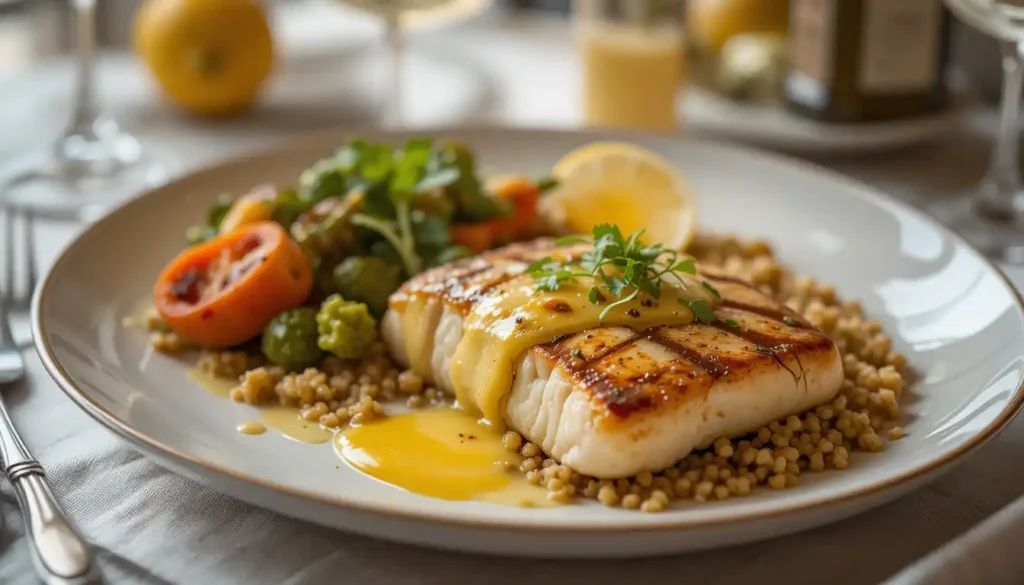
The difference between a good swordfish dish and an exceptional one often lies in the finishing touches applied right before serving. After mastering the cooking techniques, elevating your swordfish steak recipe with a flavorful sauce transforms it into a restaurant-worthy creation.
Lemon-butter-garlic sauce stands as the classic finishing touch for any swordfish recipe. For an impressive version, combine 2 tablespoons of softened butter with minced garlic cloves, freshly chopped chives, kosher salt, black pepper, fresh lemon juice, and grated lemon peel. Alternatively, create a brown butter sauce by melting 4 tablespoons of butter until light brown, then adding lemon segments and capers.
For presentation, immediately pour your chosen sauce over the cooked fish, ensuring all those flavorful pan juices are included. Garnish with freshly chopped parsley or thinly sliced chives and serve with lemon wedges for an extra citrusy brightness.
Regarding side dishes, swordfish pairs beautifully with:
- Mediterranean options: Greek salad, marinated grilled vegetables, or authentic Greek potatoes
- Grain accompaniments: Rice pilaf with mushrooms, couscous, quinoa, or farro salad
- Fresh vegetables: Roasted Brussels sprouts with bacon, sautéed yellow squash, or grilled baby bok choy
Furthermore, lighter options like watermelon feta salad or tomato corn salad provide refreshing contrasts to the meaty texture of swordfish. For a complete experience, consider wine pairings—crisp whites like Sauvignon Blanc or Chardonnay complement swordfish perfectly, especially with citrus-forward sauces.
Notably, leftovers can be repurposed into fish tacos or sandwiches for next-day enjoyment. Store cooked swordfish in an airtight container for up to two days, reheating gently to avoid overcooking.
Essentially, the finishing touches you choose will depend on your preference, but focusing on bright, clean flavors that enhance rather than overpower the natural taste of swordfish will yield the best results.
Conclusion
Mastering the art of cooking swordfish ultimately comes down to a few key principles. First and foremost, selecting steaks at least 1-inch thick ensures they maintain moisture and structural integrity throughout the cooking process. Additionally, paying attention to proper doneness cues—rather than relying on rigid cooking times—will yield consistently excellent results regardless of your chosen method.
Swordfish certainly deserves its reputation as one of the most forgiving seafood options for home cooks. The firm, steak-like texture stands up beautifully to high heat, while its mild flavor provides a perfect canvas for various seasonings and sauces. Though many fear overcooking fish, this detailed guide empowers you to achieve that perfect 145°F internal temperature every time.
Beyond its culinary versatility, swordfish offers impressive nutritional benefits as well. The protein-packed profile (45g per 8-ounce serving) makes it an excellent choice for health-conscious diners, while its naturally low-carb properties suit many dietary preferences.
Remember that finishing touches transform good swordfish into great swordfish. A simple lemon-butter sauce or brown butter with capers can elevate your dish to restaurant quality with minimal effort. Paired with complementary sides like Mediterranean vegetables or grain salads, swordfish becomes the centerpiece of a memorable meal.
We hope this guide has demystified the process of preparing this magnificent fish at home. Armed with these techniques for selection, preparation, and cooking, you can confidently serve swordfish that rivals any seafood restaurant—all while enjoying the satisfaction of creating it yourself.
You Might Also Like:
If you enjoyed learning how to cook swordfish, you might also be interested in trying other restaurant-style dishes at home. For a fun and flavorful meal, check out this homemade hibachi recipe that brings the excitement of Japanese teppanyaki cooking right to your kitchen. It’s perfect for family dinners and features juicy proteins, crisp vegetables, and savory fried rice—all made with easy-to-find ingredients.
Whether you’re planning a seafood night or want to switch things up with a sizzling hibachi-style plate, these recipes are sure to impress!
FAQs
Q1. What’s the best way to cook swordfish at home? The best method depends on your preference, but grilling and pan-searing are popular choices. For grilling, cook over medium-high heat for 4-5 minutes per side. For pan-searing, cook in a hot skillet with oil for about 3-4 minutes per side. Regardless of the method, aim for an internal temperature of 145°F for perfectly cooked swordfish.
Q2. How do I prevent swordfish from drying out during cooking? To keep swordfish moist, avoid overcooking. Cook it just until the flesh is firm and opaque, which usually takes about 5-7 minutes per inch of thickness. You can also marinate the fish before cooking or baste it with oil or butter during the cooking process to help retain moisture.
Q3. Should I rinse swordfish before cooking? No, it’s not necessary to rinse swordfish before cooking. In fact, washing fish can spread bacteria rather than eliminate it. The heat from cooking will take care of any bacterial concerns. Simply pat the fish dry with paper towels before seasoning and cooking.
Q4. What are some good seasonings for swordfish? Swordfish pairs well with various seasonings. A simple combination of salt, pepper, and lemon juice works great. You can also try a blend of lemon pepper and dill, or create a marinade with ingredients like olive oil, garlic, and herbs such as thyme or rosemary. Citrus flavors generally complement swordfish well.
Q5. What side dishes go well with swordfish? Swordfish is versatile and pairs nicely with many sides. Consider Mediterranean options like Greek salad or marinated grilled vegetables. Grain-based sides such as rice pilaf or quinoa work well too. For a lighter option, try a watermelon feta salad or a tomato corn salad. Roasted or grilled vegetables also make excellent accompaniments to swordfish.
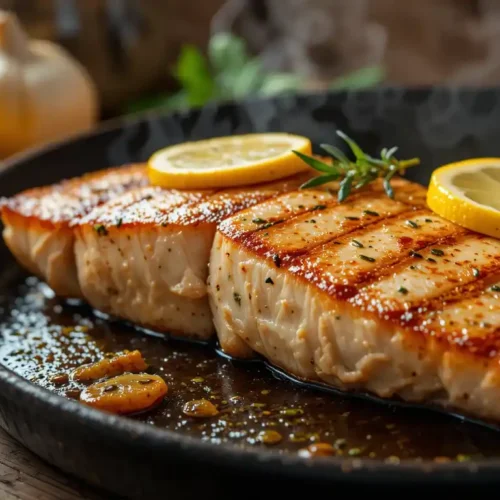
Swordfish Recipe
Equipment
- Skillet
- Grill
- Oven
Ingredients
- Swordfish steaks
- 1 tsp kosher salt for dry brining
- 1/2 tsp black pepper
- 1 tbsp neutral oil such as canola or avocado
- 1 tbsp butter for pan-searing
- 1 tbsp lemon juice
- 1 tbsp fresh parsley for garnish
Instructions
- Pat the swordfish steaks dry with paper towels. If using, dry brine the steaks by sprinkling kosher salt over them and refrigerating for 1 hour to 1 day.
- Season both sides of the steaks with black pepper and any other desired spices.
- For pan-searing: Heat a skillet to medium-high and add neutral oil. Place the steaks in the skillet and cook for 3.5 minutes per side, until a golden crust forms. In the last minute, add butter, lemon juice, and fresh parsley to enhance the flavor.
- For grilling: Preheat your grill to medium-high. Grill the steaks for 4-5 minutes per side, ensuring an internal temperature of 145°F.
- For baking: Preheat your oven to 450°F. Bake the steaks for 7-10 minutes, or until the internal temperature reaches 145°F. Optionally, add lemon-butter-garlic sauce before serving.



